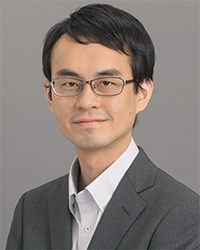p705
2789-6783
dlyang [at] gate.sinica.edu.tw

p705
2789-6783
dlyang [at] gate.sinica.edu.tw
Sam, Svetlana CY. / 886-2-2789-8386
svetlana [at] gate.sinica.edu.tw
| (1) | 國內學術研究獎項 | 2025-12 | 2025台灣物理學會傑出年輕物理學者獎 | |
| (2) | 國內學術研究獎項 | 2023-10 | 國家理論科學研究中心物理組2023年輕理論學者獎 |
| 主要相關著作: |
| Naoki Yamamoto, Di-Lun Yang*, 2023, “Effective Chiral Magnetic Effect from Neutrino Radiation”, PHYSICAL REVIEW LETTERS, 131, 012701. (SCIE) (IF: 8.1; SCI ranking: 9.4%) |